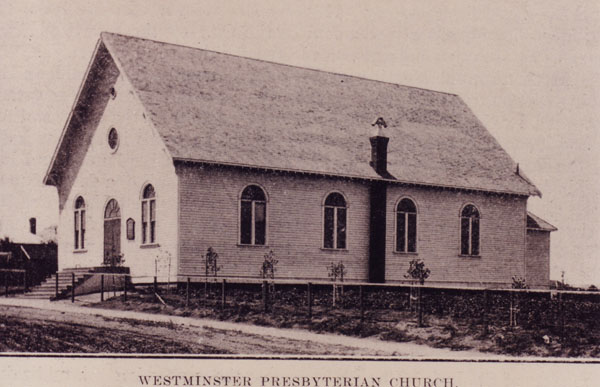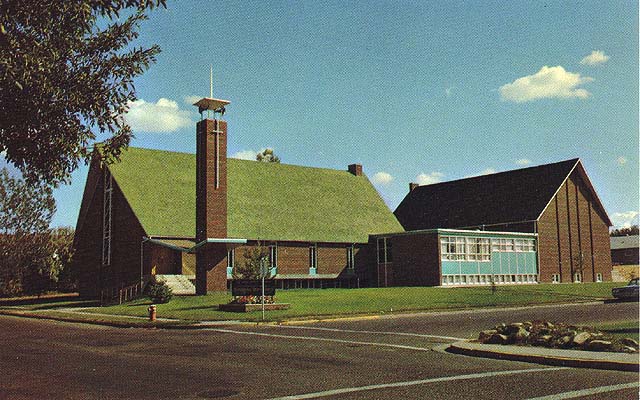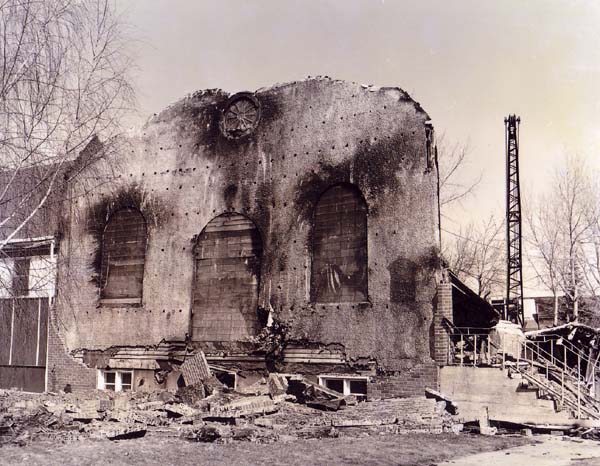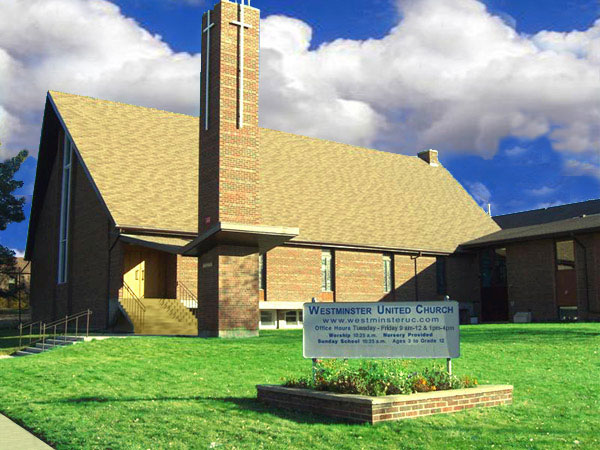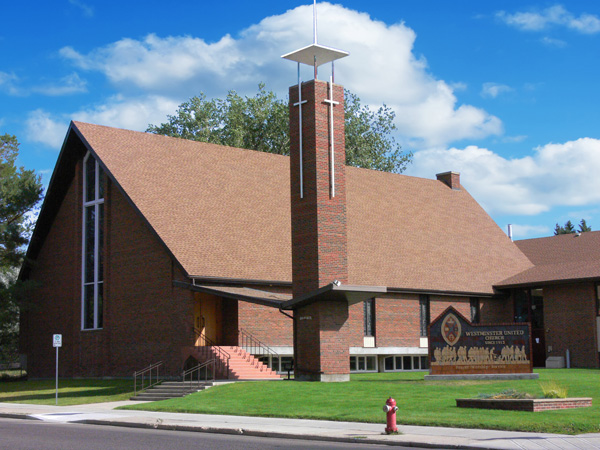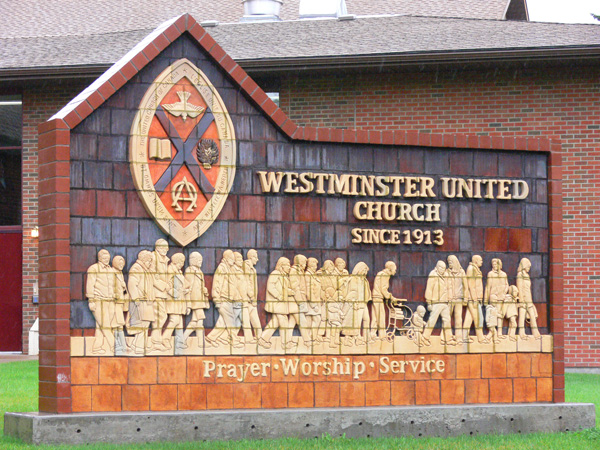History of Westminster Church
The Congregation of Westminster belonged to the Presbyterian Church prior to Union in 1925. In 1925 the Congregation of Westminster voted to join the union of the Presbyterian, Methodist, and Congregational Churches in Canada in the formation of the United Church of Canada. The Congregation of Westminster adopted the plan of organization prescribed for pastoral charges by the Manual of the United Church of Canada (i.e. the Session, Official Board, Committee of Stewards, the Christian Education Committee of the Congregation, etc.). This form of congregational organization continued until the early 1970’s when the Congregation of Westminster adopted the concept of the “large Official Board” having an official Board membership of 40-50 members, whose membership was organized into 5 Divisions (Ministry, Personnel & Education, Finance & Stewardship, Communications, Church & Society, Christian Development).
Westminster United Church came into existence when the “hill people” living around Central Park decided they wanted their own church separate from St. John’s Presbyterian Church.
First services were held in Alexandra High School on August 31, 1913 with Rev. J.O. Watts of Oakwood, Ontario as first minister. The name Westminster does not refer to the famous abbey in London, England. “West” describes the location, and “minster” is old English for monastery. Under the supervision of James Rae, the new church was completed in just two months at a cost of $4,781.00. Dedication of Westminster Church took place on June 21, 1914.
The Westminster Memorial Hall (which was destroyed by fire in 1979) was the former church building.
The name was changed from Westminster Presbyterian Church to Westminster United Church in 1925. The new church and a new site (the present location at 101 – 6 St SE) were chosen to keep up with the increasing number of churchgoers. The first service was on Sunday, September 22, 1957 under the auspices of Reverend Len Harbour.
On April 25, 1979, at 1:10 a.m., the incumbent minister (Rev. Richard Worden) was awakened by three young people reporting a fire in the Westminster Memorial Hall. The fire destroyed the Hall, did extensive smoke and water damage to the sanctuary, including the new Regent Hammond organ which had been recently purchased.
A young man was charged with deliberately setting the fire. An item used to set the fire was the minister’s pulpit robe. The young man went to trial and was acquitted.
Westminster Church was closed for three Sundays; weddings were held in homes and at Fifth Avenue Church. Sunday Services were held in Fifth Avenue United Church. One of those Sundays was Mother’s Day and the Westminster crowd was lined up along Fourth Street for half a block waiting to get into the church. The insurance claim, which was finally paid, amounted to $404,000.00.
In May 1980 the ground was broken for the new Church Hall building. This new building was made 20 feet longer than the old building. The new building was completed and occupied early in 1981.
Reverend William Bell, who was the minister at the (prior to 1957) time the original discussions about the need for a larger church began, told a story that challenged the excuse that there was a lack of money available for such a venture: “There was a man who complained that every since he made his vows at the altar his wife was always begging for money, money, money. When asked what she did with all the money he gave her, the man replied “Oh, she don’t do nothing. I ain’t give her none yet!”
(Source: The book entitled “All Hell For A Basement”, Page 150, by ED GOULD published by the City of Medicine Hat on the occasion of its Centennial in 1983.)
Centennial Celebration at Westminster United Church
The Congregation of Westminster United Church celebrated their 100th Anniversary September 6-8, 2013 beginning with a “Meet & Greet” evening, followed by a guided bus tour of the city, banquet with program, and wrapped up with an uplifting Sunday Worship with guest ministers Rev. Harold MacKay and Rev. Bob Thompson. Amid bountiful music, photos, and memorabilia; many stories and memories were shared, while re-connections and new connections were made.
Also, to commemorate 100 years of the Congregation, well-known Medicine Hat artist, Jim Marshall, was commissioned to craft a Brick Mural situated southwest of the existing bell tower.

